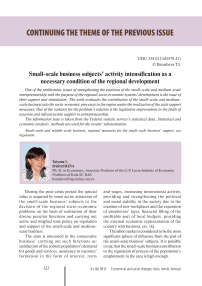Electronic education and innovative economy development in Russia
Автор: Medvedeva Elena Ilinichna, Kroshilin Sergey Viktorovich
Журнал: Economic and Social Changes: Facts, Trends, Forecast @volnc-esc-en
Рубрика: Social development
Статья в выпуске: 4 (16) т.4, 2011 года.
Бесплатный доступ
Demand for education for human potential development in the innovation economy, demographic problems of Russian society and reforming the education system force to think about the development and introduction of new forms of learning. One of them is E-Learning. The concept of e-learning meets the new paradigm of “education through life”, and also it is the most effective tool for the development of information society and innovation-based economy.
Education, human potential, e-education, education system, distance education, e-learning system, innovation economy, knowledge economy, information society
Короткий адрес: https://sciup.org/147223279
IDR: 147223279 | УДК: 37.014
Текст научной статьи Electronic education and innovative economy development in Russia
What is E-Learning?
E-Learning is an electronic (virtual) or, as more commonly called in Russia, distance learning.
This training involves computer, information and web-based technologies to support the learning process.
E-Learning today is based on network technologies, i.e., there is an integration of educational techniques and capabilities of Internet technologies to transfer the necessary competencies to the trainee.
E-Learning does not virtually have any branch restrictions in use (especially in theoretical courses).
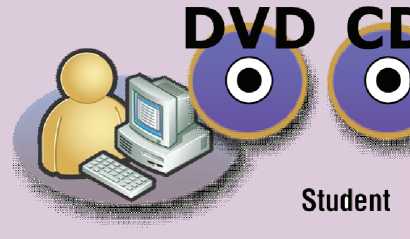
а) Off-line learning
Note: LMS / LCMS – learning management systems / learning content management systems
Figure 1. Different variants of E-Learning
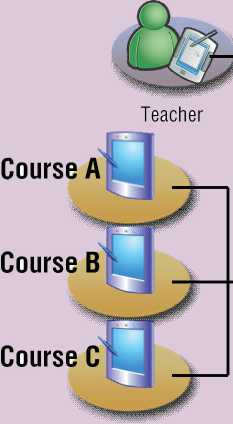
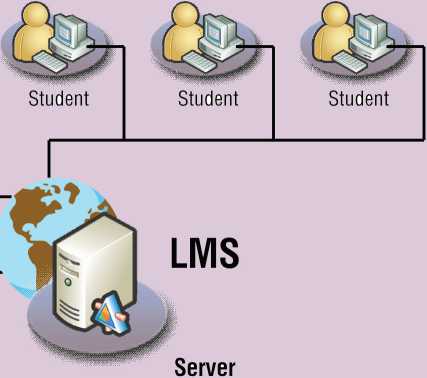
б) On-line learning
Numerous studies note a number of advantages of E-Learning , among which the most significant are the following1:
-
• mobility – access to training programs in any place and at any time;
-
• interactivity – simultaneous access to an unlimited number of students;
-
• informality – the learning process takes place in a comfortable environment;
-
• efficiency – reduced training costs;
-
• technological effectiveness – recording and playback of educational materials;
-
• individual approach – the possibility of personalizing the program for each student.
The learning itself can take place either in the on-line mode (with networking or the Internet), or in the off-line mode (based on multimedia platform CD or DVD) (fig. 1) .
E-Learning in 20052 is most popular among the inhabitants of the central region of Russia, i.e. Moscow, the Moscow region, and St. Petersburg (about 100 thousand people). They are followed by the Novosibirsk and Sverdlovsk regions, Krasnoyarsk Krai, the Republic of Tatarstan, etc.
According to the level of access to IT resources the leadership positions are held by university students (almost all have modern computers at homes with an Internet connection), businesses and of public authorities employees.
According to a survey of 16 major companies conducted by SkillSoft Research Company, employees are ready to resort to the E-Learning for several reasons (fig. 2) 3.
According to SkillSoft’s estimates a number of educational fields are leading in E-Learning (fig. 3) .
As can be seen from the charts above more than a third (34%) of respondents choose this form of training for competency improvement, 20% on the orders of superiors, 16% want to acquire new knowledge and skills. If we analyze the direction of training in E-Learning, almost a quarter (22%) belongs to information technology.
This is easily explained by the fact that most firms engaged in IT for a long time have their own designs for the training of their personnel. It is obvious that this form of training will be required and relevant to Russia and in the future.
Figure 2. Reasons for E-Learning
5%
10%
11%
4%
34% il
16%
20%
-
■ Competence increase
Superiors' order
-
■ Obtaining new knowledge and skills
-
■ Self-perfection
Career growth
-
■ Receiving a certificate
Others
Figure 3. Fields of study in E-Learning
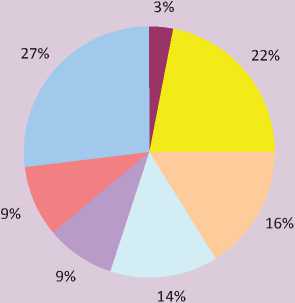
-
■ Engineering
Information technology
Personnel management
Customer service
-
■ Accounting / finance
-
■ Marketing / sales
-
■ Others
Relevance of E-Learning in modern conditions
The effectiveness of e-learning is confirmed by foreign experience, for example, the former head of GE, Jack Welch has invested 2 million dollars in the bankrupt unit of Cleveland University, and together with other investors wants to turn it into a center of online learning. In the online university there will be MBA, undergraduate and graduate programs. The strategy is simple: to use scientific, theoretical, and human potential, which is available at the university, and to create an online university on its base. Russian universities have enormous potential, which may be irretrievably lost. The situation could become similar to the present state of kindergartens and primary vocational education system, when it is easier to rent the available resource base and not convert activities to develop new directions and opportunities for training.
During the crisis, the demand for many types of business education dropped. For example, analysts record a drop of 30 – 40% on MBA courses. The use of distance learning (E-Learning) significantly reduces the cost of education process and may contribute to survival and maintenance the scientific potential of many universities in the country including the government ones. However, to implement such forms of education training institutions need to have some technical, informational and regulatory framework.
According to the estimates of EduVentures research firm about 11% of American students study most of the subjects outside the university using online resources. A decade ago, there was only 1%. In the U.S., students of traditional universities can learn up to 30% of courses without leaving home, and in this case, education would still be considered full-time. For other forms of learning online classes can occupy 80% of the entire program. In the U.S., about 4 million students (20%) learn at least one course online4. In Russia, this practice is applied only in commercial universities (e.g., MHA); in state educational institutions you cannot master the program online by law.
According to The Economist Intelligence Unit, Russia is takes the 55th position in the world in its readiness to implement e-learning. At the same time, Russian citizens spend about 10 billion dollars a year for remote education in foreign universities. Market volume of E-Learning in Russia in 2010 amounted to about 4.7 million dollars. Next year, in connection with the implementation of public education programs and growing demand, it is projected to increase the volume of E-Learning Market in Russia to 10 million dollars5.
In Russia, the forms of distance learning have significant limitations. Online education is implemented in only a few universities. There are many reasons for that but the main one is in the population’s prejudice against this form of learning. This is due mainly to issues of quality of such education. The attitude to distance education is in general dismissive, and in Russia it is more often practiced by commercial universities, which are reproach for the low quality of education as it is. For business educational institutions online training is just a way to cut costs. For online education to be claimed, state or corporate orders are necessary.
E-Learning in the information society and knowledge economy
Modern informatization of society has an impact on all spheres of activity. Education is no exception, as knowledge as well as information is very quickly becoming obsolete. It is important to teach a person to find current and relevant information and thus gain new knowledge – this is the main task of education today.
Analyzing the processes of information society formation, we can distinguish five main areas of radical changes in the education system:
-
• development of non-formal education conditioned by the impact of information technology;
-
• strengthening the individualized nature of education, which allows taking into account the capabilities and needs of each individual;
-
• adoption of self-education self, selflearning as a leading form of education;
-
• focus on education creating knowledge;
-
• formation of continuous education system, i.e. education throughout life.
All of the above items to some extent overlap with E-learning. There is also a problem of “avalanche-like” increase in the amount of information that a person has to analyze in the course of his or her work in the era of knowledge economy.
What percentage of knowledge necessary to perform work, can a modern worker hold in the head? According to Robert Kelly (Carnegie-Mellon University), this percentage is steadily declining and if in 1986 it was 75%, in 1997 is was 20 – 15%, in 2008 this value did not exceed 8 – 10%6. The tendency to expedite the updating of professional knowledge is obvious. For a modern person the main question is the following: “Where and how to obtain the necessary knowledge?” And the sooner the worker is able to find an answer to his or her question, the faster the result in work activity will be obtained.
Obviously, that the educational process requires mobility, which can be obtained only through E-Learning. In this regard, a remote access to educational resources published on the Internet, and the possibility of quick access to them is essential for the development and modernization of Russian education system.
Development of the Internet served as the basis for the introduction of network technologies in learning and knowledge dissemination. This allowed the use of new forms of dissemination of educational material, such as electronic books and libraries, convenient testing system, as well as a means of communication (fig. 4) .
E-Learning and distance education in Russia
In Russia today, distance learning develops mostly through corporate programs of private enterprises, which, therefore, want to minimize the cost for staff training, so they develop or record on video standard courses and then update them from time to time.
There is also a lack of educational content, i.e. the number of lectures and materials that could be provided to students. There appears a problem of transformation of the existing paper course books into electronic form, including the project of electronic libraries creation, and perhaps it will be resolved in the near future in connection with the manifestation of the interest of the state to this sphere of activity.
The very essence of the electronic (distance) learning is based on three components: content, technologies and services (fig. 5) .
Only the presence of all three components can make the Russian education market really accessible to everybody: the employees of Russian companies, including the provincial ones, will be able to use the teaching materials of any Russian, and even global university.
The question of quality E-Learning course still remains open. Currently, the list of components, which should be included in any high-quality E-Learning content is the
-
Figure 4. The system of electronic (distance) learning
SYSTEM OF ELECTRONIC (DISTANCE) LEARNING
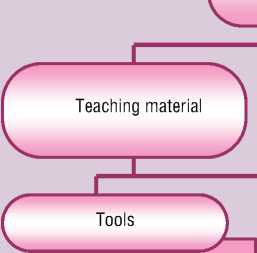
■ Manual
■ Glossary
■ Illustrations
■ Video material
■ Audio material
■ Alphabetic index
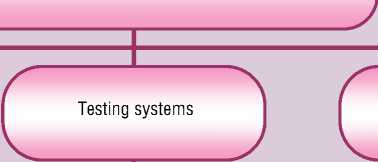
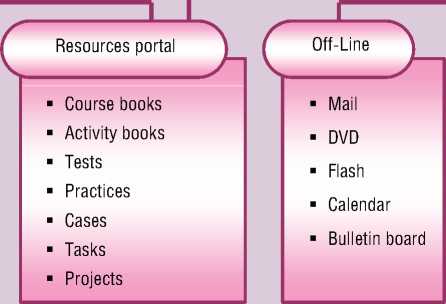
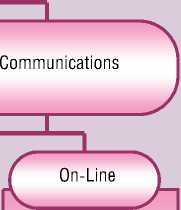
■ Television and audio space bridges
■ Forum
■ ICQ
■ Internet classrooms
-
Figure 5. The main components of E-Learning
Е-LEARNING ELECTRONIC EDUCATION

■ Courses
■ Seminars
Content

Technologies (methods and materials andматериалы)

Services
■ Full time
■ Teachers
■ Part time
■ Rooms
■ Pragrams
■ Training etc.
■ Distance
■ Mixed
■
■
■
LMS systems
Training portals
New teaching materials
-
■ Learning
-
■ Testing
-
■ Certification
-
■ Consulting
-
■ Outsourcing
-
■ Maintenance etc.
-
following: user manual, training planned schedule, tutorial, tests and tasks for selfcheck, presentations, a list of compulsory and additional sources, questions or plans for the forums and chat; an acceptable design and user-friendly interface. However, there are still no specific evaluation criteria for each of the components today.
Legal regulation of E-Learning and distance education
We should not forget about the problem of legal regulation in the E-Learning sphere. In Russia, the legal grounds for the introduction of distance learning are the laws: “On Education”, “On Higher and Postgraduate Vocational Education”, the Order of the Ministry of Education of the Russian Federation dated 18.12.2002 № 4452 “On approval of methods of application of distance learning technologies (distance learning) in institutions of higher, secondary and additional vocational education of the Russian Federation”. These laws are not enough for a clear regulation of relations in the sphere of public education. In the current drafting of this law, distance learning, as a separate form of training, was not present. The law says only about distance learning technologies. Therefore the question of certification of specialists in this field remains open. At the moment, it is not possible to get an integrated certificate.
In Russia, there is an Agency on Public Control of Education Quality and Career Development (AKKORK), which provides services for public and professional assessment of the quality of education, conducts a comprehensive audit of the university, introduces an effective quality management system at the university, provides consulting and methodological support on business issues in higher and vocational education and, together with the European Foundation for Quality in E-Learning (EFQUEL) and the European Association for Quality Assurance (ENQA), it is able to produce certification of personnel working in the field of distance learning7.
Certain educational institutions provide education and training in e-learning, confirming the qualifications of the trained with issued diplomas or certificates, but there has not yet been worked out a unified system of certification.
If you analyze the situation with online learning in higher education, it is obvious that its development is inhibited by state standards. According to them, to get state diplomas a student must not only pass the exam, but also attend the “classroom hours” within the walls of the university. Universities have been already waiting for several years for the development of new fourth-generation standards, so there is no counting on that the standards for online (or distance) learning will be developed at the earliest possible date.
Despite the fact that in Russia there are already students studying remotely, the final assessment of knowledge and defense of graduation projects is not remote. Such certification system is envisaged by the legislation and is a guarantee of an objective assessment of knowledge gained by students during their studies.
According to current legislation in the Russian education system with this form of study, students can get only two versions of a document certifying the passage of learning. In the first case it is a course certificate of private training center (for example, such certificates are used in the training center for programmers in the program “1C Accounting”). The second case it is receiving of the so-called educational credit, recognized by colleges and universities with the traditional form of training (this form is used today by training institutions, such as IPKIR).
This form is very promising. Over the past ten years, virtual forms of learning have become familiar to most large institutions around the world. Today there are still only about 400 different learning platforms and 30 virtual classrooms in the world. However, their number is constantly growing. In 1998, 1.5 billion dollars was spent for this purpose, and already in 2005, according to the USA Institute of Standards and Technology, the amount of money invested in the education Internet services, has reached 46 billion dollars8.
IT architecture of the distance E-Learning system
E-Learning involves changing the very form of training, taking into account certain specifics of e-learning. First of all, it is that you can study at any place where there is a computer with Internet connection (even at home or at work). Today it is possible to view and work with data using advanced cell phones and netbooks almost everywhere. Students can choose the beginning and the end of their classes themselves, and they can attend a virtual classroom every day, or at any convenient schedule. Receiving or sending information associated with the study of the course, students are constantly interacting with the teacher and other students (fig. 6) .
As with traditional learning, the teacher who leads one or another virtual course, develops curriculum, conducts classes in a virtual classroom, organizes and directs the discussion on the topic of study, answers students’ questions and, of course, checks the correctness of assignments. Each course has its own time frame. In order to study the subject students will require books. They can be ordered through virtual bookstores operating under courses.
The virtual education system itself makes it possible to acquire additional knowledge for everyone, regardless of national, racial, sexual, social and other characteristics that might otherwise become a pretext for discrimination. The special role is played by personal characteristics, preferences and qualities, contributing or not contributing to the successful E-Learning.
Disadvantages of E-Learning
Freedom and schedule flexibility in training may be interpreted as permissiveness by many Russian students.
Figure 6. IT architecture of distance learning system
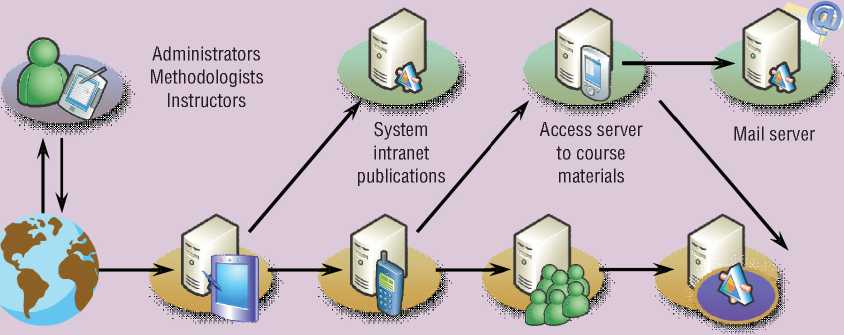
Internet Basic server Security Server of realtime Database server

Source: Education in the 21 century, the presentation of IT Academy
Therefore, a real internal motivation to studies and self-discipline is required from the students (regardless of age). It is necessary to abide by the terms and requirements of the assignment and understand that e-education system is not easier than the traditional one. It is extremely important not to skip classes and complete the assignments on time.
Not all professional skills can be obtained through an electronic (distance) education. There are a number of academic disciplines, in which distance learning is unacceptable. For example, when studying the structures of technical facilities it is necessary to have practical studies with the full-scale exhibits and their layouts, so as not everything can be replaced by computer simulation. You cannot become a doctor without curriculum of clinical practice, a hairdresser – without practical job skills, etc. There is a certain list of disciplines and specialties of such kind of course. It should be understood that there is specific of training in any profession and one should intelligently select those areas that can be realized through the E-Learning with the greatest efficiency.
High quality of electronic (distance) education is determined by the following factors9:
-
• ability to attract highly qualified scientific and pedagogical staff and experts in the field of new information technologies to develop broadly replicable training and methodological support;
-
• high intellectual potential and development of informational educational environment;
-
• high level of self-reliance in students’ cognitive activity;
-
• large number of various cases and assignments, including those of research character;
-
• potential and openness of collective creativity during teleconference on the Internet / Intranet;
-
• opportunity of almost daily personal contact of the teacher and the student. Obviously, not all factors can be implemented today in the Russian education system.
Distance education services of high quality require a large initial cost for developing the information environment as well as e-learning is implemented primarily on the IT basis. Organization of e-learning in any educational institution from scratch is a rather expensive exercise, which can only be recouped through increased enrollment, compared with classroom forms of learning. That’s why many Russian schools use different forms of e-learning depending on their technical capabilities.
Advantages of E-Learning
Having all the above negative views on e-learning there is one indisputable fact – it is the cost of training, it is 3 – 5 times lower than the cost of the traditional education. In this form of training, if there is a need to suspend classes, you may always do it and resume them when there is an opportunity to study. This is especially important for those who are learning on the job, because very often at work there are questions, which require obligatory intervention. For example, at the beginning of the crisis there was an outflow (20 – 30%) of the enrolled in MBA courses, which was associated specifically with the necessity of their presence in the workplace, but not with financial difficulties.
That is why E-Learning is gaining popularity. Especially large and medium-sized companies rely on distance learning. A variety of distance education is online learning: it can provide ongoing on-the-job training. In 68% the learning takes place in the workplace, 17% – in the classroom, 14% – at home, 1% – in different locations (fig. 7) 10.
At present, the average operating time in one place (in the same organization) in the big cities is just more than 1.5 years. This means that the time frame for the adaptation and training of employees is constantly reducing. Under these conditions, the employee’s longterm plan has ceased to exceed the bar in three years.
The main burden of education is shifted from the formal structures to the structures of informal learning (social learning – mutual learning, learning on demand, knowledgesharing systems, independent work with information). Enhancing role of informal education leads to the fact that the training of personnel in organizations makes a stronger emphasis on knowledge sharing in the personal interactions between the staff and in the process of engagement through enterprise portals, sites, and specialized applications (information systems for education)11.
Can E-Learning replace traditional forms of education?
Today it is still too early to say that the E-Learning can supplant the traditional form of teaching, as there is a number of reasons for this:
-
• first, the learning process becomes entirely dependent on technology, ICT and its possibilities, and in terms of pedagogy there is little positive in it;
-
• second, E-Learning requires, above all, discipline and ability to work independently, which is clearly not the case with the Russian students;
-
• third, computer equipment and technology cannot replace a live person – the teacher. Therefore, the most promising today is blended learning – the so-called mixed or of full-time and distance learning. It combines the E-Learning and traditional teaching.
It should be noted that the proliferation of electronic forms of training is a natural stage in the evolution of the education system from the classical to the Virtual University, i.e., from the blackboard with chalk to computer training programs, from conventional libraries to electronic ones, from small study groups to virtual audiences of any size, etc. The processes taking place in education are not antagonistic, and therefore the virtual and traditional forms of learning should not be considered as mutually exclusive.
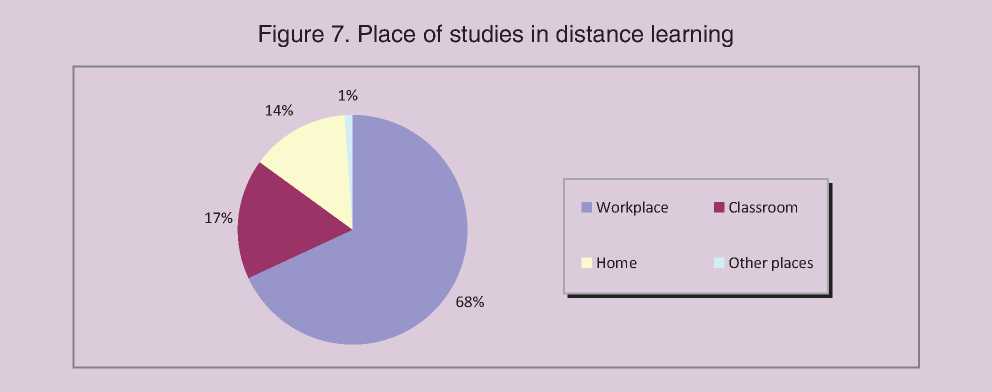
Figure 7. Place of studies in distance learning
1%
14%
■ Workplace
■ Classroom
17%
Other places
Home
68%
Table 1. State and municipal educational institutions equipped with classrooms for computer science and computer technology (at the beginning of school year)
|
1990/91 |
1995/96 |
2001/02 |
2003/04 |
2005/06 |
2007/08 |
2009/10 |
|
|
The number of educational institutions having computer classrooms |
|||||||
|
Total |
12155 |
24472 |
27787 |
33762 |
35073 |
34988 |
43209 |
|
as a percentage of the total number of educational institutions |
37.1 |
68.6 |
74.5 |
90.6 |
94.8 |
96.7 |
78.6 |
|
having places with a computer, thousands |
142.8 |
315.7 |
311.0 |
336.5 |
381.4 |
419.6 |
522.3 |
|
Source: Russian Statistical Yearbook. 2010: stat.coll. / Rosstat. М., 2010. |
|||||||
A good education today is a synthesis of various forms of obtaining knowledge and modern technology, the optimal combination that can be determined for themselves only by the students.
It is obvious that electronic (distance) education requires significant investment on the part of those who want to offer this service to the market. It is necessary to create the E-Learning infrastructure. Infrastructure12 is a set of technology systems, business processes, business culture and control mechanisms, which determine how the organization operates, and its very ability to work. You should not confuse the infrastructure with assets and resources, because the existing infrastructure allows using or restricts the use of assets such as technology, personnel and time.
E-Learning infrastructure in Russia
The main problem of the Russian education system at almost all levels is the lack of normal (decent) funding. The situation has changed for the better before the crisis, when the government began to implement the national project “Education”. Schools and universities of the country were being provided with modern computer equipment, interactive boards, projectors, video and audio equipment (tab. 1.) .
The above table shows that over the past 20 years there has been a qualitative leap forward in providing Russian school classrooms for teaching the basics of computer science. The number of places for students has increased almost 5 times, and for the period of implementation of the national project “Education” there appeared 100 thousand more places with a computer in our schools.
It is very important as the foundations for all subjects are laid in elementary and secondary school. Besides at the beginning of the academic year 2009/10, 32,633 educational institutions had their own site on the Internet, allowing implementing the foundations of e-education at school level.
With the crisis the supply of computers and electronic learning tools reduced or eliminated at all in the Russian and world economies. Many schools faced the fact that they did not have financial capabilities to service the received equipment, and a number of educational institutions did not even have this line in the budget. As a result, a lot of hardware is simply idling in the classrooms and not used in the learning process. Many schools simply do not have enough experience and knowledge to operate it (for example, in schools interactive boards are sometimes used just to demonstrate presentations on them).
It is necessary to understand: how the Russian education system is ready today to implement new learning technologies, what are the qualitative and quantitative indicators of its informatization.
The development of electronic forms of education is impossible without the use of new technology and training tools. It is therefore necessary to analyze the extent of their use at all stages of the educational process. We use the statistical data for this (tab. 2) 13.
The data presented in the table demonstrates a positive trend in the use of information and computer technologies at various levels of the educational process in the Russian education system. However, one can call them qualitative or significant in the last 3 years only for comprehensive educational institutions, since there an increase in the number of personal computers from 674.5 thousand units up to 1056.1 thousand units is observed, that is, almost 1.6 times.
Table 2. Electronic means of learning in educational institutions at various levels of the educational system (at the beginning of school year)
|
Indicators of educational institutions |
2007/08 |
2008/09 |
2009/10 |
|
Comprehensive educational institutions |
|||
|
Number of personal computers, thousands pieces, including: |
674.5 |
-* |
1056.1 |
|
in a local computer network |
353.2 |
- |
555.3 |
|
having access to the Internet |
286.5 |
- |
524.3 |
|
The number of PCs used for training purposes, for 100 students, pieces |
4.0 |
- |
6.2 |
|
Primary vocational institutions |
|||
|
Number of personal computers, thousands pieces, including: |
60.0 |
63.3 |
63.6 |
|
in a local computer network |
32.9 |
34.4 |
35.4 |
|
having access to the Internet |
11.7 |
15.9 |
19.0 |
|
The number of PCs used for training purposes, for 100 students, pieces |
6.0 |
7.0 |
8.0 |
|
Secondary vocational institutions |
|||
|
Number of personal computers, thousands pieces, including: |
181.3 |
192.4 |
210.1 |
|
in a local computer network |
124.5 |
139.2 |
155.8 |
|
having access to the Internet |
78.6 |
94.7 |
114.0 |
|
The number of PCs used for training purposes, for 100 students, pieces |
7.9 |
9.0 |
10.2 |
|
Higher vocational institutions |
|||
|
Number of personal computers, thousands pieces, including: |
568.1 |
603.7 |
627.6 |
|
in a local computer network |
409.4 |
461.2 |
520.3 |
|
having access to the Internet |
382.3 |
430.9 |
486.0 |
|
The number of PCs used for training purposes, for 100 students, pieces |
9.2 |
9.7 |
10.2 |
|
* Up to the academic year 2009/10 statistical observation was carried out once every two years. |
|||
Figure 8. Indicator “The number of computers used for educational purposes, for 100 students, pieces” in educational institutions at various levels of the educational system
10.2 10.2
46 07 6.2
2007/08
2008/09
2009/10

Seconda ry vocationa l institutions
-
■ Comprehensive educational institutions ■ Primary vocationa l institutions
-
■ Higher vocationa l institutions
Russian Statistical Yearbook. 2010; authors' calculations.
During the same period in higher educational institutions the number of computers has increased only 1.1-fold, and in primary vocational educational only by 3,600 pieces. A more important and interesting figure in terms of informatization of education is the number of computers used for training purposes for 100 students. This figure will be analyzed with the help of the diagram (fig. 8) .
Institutions of higher and secondary vocational education now have a score of 10 computers per 100, which is a positive trend compared with previous years, but this is clearly not enough for modern forms of the educational process with the use of electronic means of learning, the effectiveness of which first of all, depends on the use of PCs by each student.
In comprehensive educational institutions this figure was 6 out of 100, i.e. only six out of 100 students can use a computer in class at a given time.
Prospects for E-Learning in Russia
Prospects for E-Learning in Russia are quite positive thanks to a combination of significant demand for alternative ways of training (primarily corporate: skills development) and opportunity to learn the most successful experience of foreign companies. The corporate sector, government institutions and centers of retraining seem to be the most promising in terms of E-Learning implementing. In the education sector, uniting institutes of higher education, the introduction of combined learning options seems to be possible. In this case full-time students will study some of the subjects remotely. To obtain basic education in Russian universities the E-Learning, apparently, is not prospective. Primarily it is due to a significant reduction in the number of entrants. In 2010 their number will amount to only 62% of 2005 level, and it is easy to guess that the overwhelming majority of entrants will prefer a familiar and reliable way of full-time studies.
Despite the existing problems, the real savings of universities and companies-employers with the organization of distance learning is obvious. But to be honest E-Learning will become widespread only when in Russia there will be the appropriate technical capabilities, good telecommunication channels – primarily in the province, for which this version of training was originally designed.
As possible solutions to this problem we can offer, for example, the creation of computer network centers in public places (it is mostly related to the remote areas of the country), the development of a credit system for youth for educational needs, teachers training in universities to study with the use of IT (it is no secret that many qualified teachers are often not able to work with computers at the level necessary to conduct E-learning).
The most important condition for successful implementation of E-Learning in Russia is political and legal support from the government, the joining of resources of the Ministry of Education and Science and the Ministry of Communications, promotion from businesses and large IT-companies.
Список литературы Electronic education and innovative economy development in Russia
- Rimashevskaya, N.M. The quality of human potential in the innovation economy/N.M. Rimashevskaya//Population. -2009, № 3. -Pp. 16-29.
- Nikolaev, E.M. State regulation of the education market/E.M. Nikolaev//Russian Economic Online Journal . -M.: 2006. -Available at: http://www.e-rej.ru/Articles/2006/Nikolacva.pdf
- Suchkova, I.A. Socio-economic content of the category “Education”/I.A. Suchkova//Social sciences and humanities in the twenty-first century: proceedings of the international conference. Vol. 1. Economic organizations: the functioning and management/ed. G.V. Ulyanova. -Kovrov: KGTA. 2006, Pp. 236-247.
- Medvedeva, E.I. Marketization of education: social and economic problems (southeast Moscow Oblast case): monograph/E.I. Medvedeva. -Kolomna: MGOSGI, 2010. -224 p.
- Revenues, expenditures and consumption of households in 2010 (based on a sample survey of household budgets) /Federal State Statistics Service. -Available at: http://www.gks.ru/bgd/regl/b10_102/IssWWW.exe/Stg/d03/3-01.htm
- Emelianenko, A.S. With might and main for a scholarship, a radical initiative was not supported/A.S. Emelianenko//Rossiyskaya Gazeta. -2011. -№ 5387 (11). -January 21.
- Putin ordered to restore order in Russian education. 1.02.2010, 18:40//Policy News. Analysis of events in Russia. -Available at: http://oko-planet.su/politik/newsday/30144-putin-potreboval-navesti-poryadok-v-rossijskom.html
- Rimashevskaya, N.M. Man and reforms: the secrets of survival/N.M. Rimashevskaya. -M.: ISESP, 2003. -392 p.
- Rimashevskaya, N.M. Demographic changes in Russia as a precondition for modernizing the education system/N.M. Rimashevskaya, V.G. Dobrohleb, O.V. Kislitsina//Population. -2009. -№ 1. -Pp. 6-9.
- Silkin, R.S. Personnel training in terms of continuing professional education: a corporate aspect: practical-oriented monograph/R.S. Silkin, O.I. Sidorov, T.I. Suzdaltseva. -Tomsk, Publishing House “B-Spectr”, 2007. -152 p.
- Rating of EGEMetr portal: popular specialties with the eyes of 2010 entrants. . -Available at: http://www.egemetr.ru/rating/ispec.php.02.03.2011
- The most popular specialties in the labor market in Moscow . -Available at: http://cao.mos.ru/document/2010/02/24/d19275//
- Staroverova, E. Five most popular occupations for university graduates of 2010/E. Staroverova . -Available at: http://www.trud.ru/article/11-05-2010/241811_pjaterka_samyx_2010.html
- Adaptive strategies of the population. collective monograph/ed. E.M. Avraamova. -SPb., 2004. -196 p.
- Medvedeva, E.I. The influence of education on human potential formation: the realities, opportunities and threats to the country's economic security/E.I. Medvedeva, S.V. Kroshilin//National interests: priorities and safety. -M.: Publishing House “Finance and Credit”, 2011. -№ 8 (101). -Pp. 57-67.
- Sorokin, P. The present state of Russia/P. Sorokin//New World. -1992. -№ 4-5. -Pp. 35-39.
- Golubeva Yu.S. E-Learning: from virtual training to real success http://www.training.com.ua/live/news/
- Chekmareva E.S. A problem university can be turned into a profitable institution of online education//www.ubo.ru/articles/?cat=120&pub=2563
- Rudycheva N., Koroleva E. Long drawn-out start of E-Learning in Russia//www.cnews.ru/reviews/free/national/articles/e-learn/index.shtml
- Semenkov I.S. Education via the Internet -it's real//www.websoft.ru/db/wb/88E9B0A18D19DD29C3256C84004 FE0A0/doc.html
- Соловов А.В. Мифы и реалии дистанционного обучения//Высшее образование в России. 2000. № 3. С. 116-120.
- Patrick Lambe. An alternative method of calculating the efficiency of investments in e-learning in professional training // Straits Knowledge, Singapore // www.websoft.ru/db/wb/A4213FD3/doc.html

